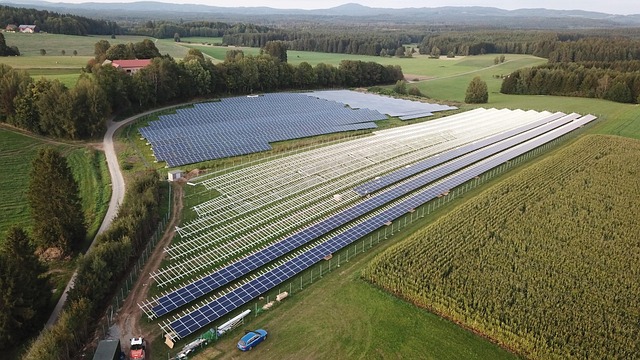The Power of Solar Energy: Transforming Our Planet
As the world grapples with the pressing challenges of climate change and environmental depletion, solar energy emerges as a beacon of hope. This sustainable energy source harnesses the sun’s abundant and inexhaustible rays, offering a cleaner, greener alternative to fossil fuels. In this article, we will explore the mechanics of solar energy, its myriad benefits, its role in combating climate change, and the technological advancements that are driving its adoption globally.
Understanding Solar Energy
Solar energy refers to the radiant light and heat that is emitted by the sun, which can be captured and converted into electricity or thermal energy. This conversion primarily occurs through two main technologies: photovoltaic (PV) systems and concentrated solar power (CSP) systems.
Photovoltaic Systems
Photovoltaic systems are comprised of solar panels that contain photovoltaic cells. These cells are typically made from silicon and are designed to absorb sunlight, which then excites electrons, generating electricity. The electricity produced can be used on-the-spot or stored in batteries for later use, enabling homes and businesses to harness solar energy around the clock.
Concentrated Solar Power Systems
Concentrated solar power systems utilize mirrors or lenses to focus a large area of sunlight onto a small area. This concentrated light is then used to produce steam, which drives a turbine connected to a generator, thereby producing electricity. While CSP is more commonly deployed in large, utility-scale projects, PV systems can be scaled from small residential installations to expansive solar farms.
The Environmental Benefits of Solar Energy
The potential of solar energy to mitigate harmful environmental impacts is one of its most significant advantages. As nations and organizations work towards reducing greenhouse gas emissions, the transition to solar power presents a viable solution.
Reduction in Carbon Emissions
One of the most pressing concerns with traditional energy sources is their contribution to carbon emissions, which drive climate change. Solar energy systems generate electricity without emitting carbon dioxide or other harmful pollutants. By replacing fossil fuel energy with solar power, we can significantly lower our carbon footprint and aid in global efforts to combat climate change.
Conserving Water Resources
Water scarcity is a growing issue worldwide, often exacerbated by the energy sector, which is responsible for significant water consumption. In contrast, solar energy systems generally require minimal water for operation, particularly PV systems. This characteristic makes solar energy an attractive option in regions where water resources are strained.
The Economic Advantages of Solar Energy
In addition to its environmental benefits, solar energy offers substantial economic advantages. By investing in solar technology, nations can enhance their energy security, stimulate job creation, and reduce energy costs.
Job Creation and Economic Growth
The solar energy sector has emerged as a significant source of job creation. According to various reports, the solar industry has created thousands of jobs in installation, maintenance, manufacturing, and research and development. This growth not only helps individual economies but also contributes to the development of a workforce skilled in renewable energy technologies, a crucial aspect of future job markets.
Reducing Energy Costs
As technology advances, the costs associated with solar energy systems have plummeted. The price of solar panels has seen a dramatic decline, making solar installations more accessible to homeowners and businesses. Moreover, solar energy can lead to long-term savings on energy bills, reducing reliance on expensive grid electricity and insulating consumers from volatile energy prices.
The Role of Solar Energy in Combating Climate Change
Solar energy’s potential in the battle against climate change cannot be overstated. With global temperatures continuing to rise and extreme weather events becoming more frequent, the urgency for a transition to renewables like solar has never been greater.
Decentralized Energy Production
Solar energy promotes decentralized energy production, which refers to generating power at or near the point of use. This decentralization reduces transmission losses, enhances energy efficiency, and allows remote communities access to electricity that may not otherwise be feasible through traditional grid infrastructure. Furthermore, it fosters energy independence, allowing regions to mitigate the risks associated with reliance on external energy sources.
Global Adoption of Solar Technologies
Countries around the globe have recognized the importance of solar energy, and many are adopting ambitious solar targets. For instance, nations like Germany, China, and the United States are leading the charge with extensive investments in solar technologies. These efforts are not only aimed at achieving energy independence but also at meeting international climate agreements like the Paris Accord.
Technological Advancements in Solar Energy
The solar energy industry is witnessing rapid technological advancements that are improving efficiency and reliability while lowering costs. These innovations are transforming the landscape of how we harness solar power.
Improved Efficiency of Solar Panels
The efficiency of solar panels has greatly improved due to advances in materials and technology. New types of photovoltaic cells, such as bifacial panels that capture sunlight from both sides, are being deployed, resulting in a higher energy output. Furthermore, the development of perovskite solar cells promises even greater efficiency and lower production costs, potentially revolutionizing the industry.
Energy Storage Technologies
Energy storage is a critical aspect of solar energy utilization, ensuring that energy generated during sunny days can be used during cloudy periods or at night. Advances in battery technologies, particularly lithium-ion batteries, have made it feasible to store solar power efficiently. Research is also underway to develop alternative storage methods, such as solid-state batteries and flow batteries, that could provide even more formidable capacities.
The Challenges Facing Solar Energy Adoption
Despite its advantages and potential, the solar energy sector faces several challenges that must be overcome to realize its full potential. Understanding these obstacles is crucial for stakeholders in the energy sector, policymakers, and consumers alike.
Initial Investment Costs
While the costs of solar technology have dropped significantly, the initial investment in solar systems can still be a barrier for many consumers. Incentives and rebates are essential for encouraging solar adoption, allowing a broader segment of the population to benefit from renewable energy.
Intermittency and Reliability Issues
Solar energy’s dependence on weather conditions means that it can be unpredictable and intermittent. This characteristic poses challenges for energy grid stability, particularly as more networks integrate solar energy. Enhancing grid infrastructure and investing in energy storage solutions are critical to addressing these reliability issues.
The Future of Solar Energy
The future of solar energy looks promising as technology evolves, costs continue to decline, and global awareness about climate change increases. The transition to a more sustainable energy system will involve a collaborative effort among governments, industries, and consumers.
Integration with Smart Grids
As we step further into the digital era, integrating solar energy with smart grid technology will become increasingly important. Smart grids allow for real-time monitoring and management of energy resources, enhancing the efficiency of energy consumption and distribution. These integrations can help mitigate some of the intermittency challenges associated with solar energy.
Global Policies and Frameworks
Strong policy frameworks and international cooperation will play essential roles in accelerating solar energy adoption. Governments must implement supportive policies that encourage investment and research in solar technologies while also working toward common goals for sustainability and carbon reduction.
Conclusion
The power of solar energy is immense, offering a sustainable solution that can transform economies, protect the environment, and mitigate the challenges of climate change. As technology continues to evolve and the global community recognizes the urgent need for cleaner energy sources, solar energy stands poised to play a central role in the world’s energy landscape. Together, through innovation and commitment, we can harness the sun’s energy to illuminate a path toward a more sustainable future.



